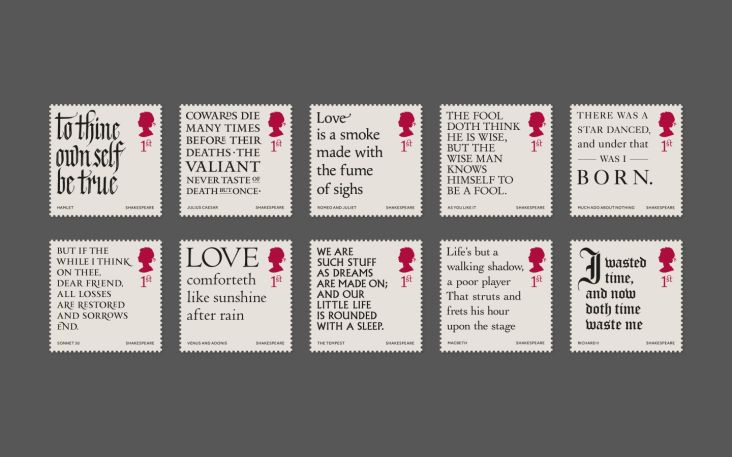Essential tips on how much to charge for your freelance work
When you venture into the world of freelancing, it's difficult to know how much to charge and what your hourly or day rates should be. There are no rule books, no apparent solutions – it's a pure guessing game.
](https://www.creativeboom.com/upload/articles/ec/ec1947e5869de0ac044d8af153f5bb6a36b77609_1280.jpeg)
Image courtesy of Adobe Stock
You don't want to charge too much and price yourself out of the market, but you don't want to undersell yourself either. Above all, remember that your skills are valuable, so it's essential you get your rates right before talking to any potential clients.
Here are Creative Boom's top tips on how much to charge for freelance work, followed by some useful links to some of the UK's leading bodies, societies and associations who can offer further guidance on freelance pricing.
Tips on Calculating Your Rates
1. Do some research
A significant first step is to do some research to see what other freelancers are charging for similar work in your area. If you've got more established freelance friends, ask them what their hourly rates are. Compare and come up with a price you feel reflects your skills and experience, but make sure you're competitive.
In my experience, I've known web/graphic designers and illustrators to charge anything between £20-£60 per hour; web/software developers between £25-£90 and copywriters to charge from £20 to £50 per hour. But how long's a piece of string? Your hourly rate will be particular to your skills and expertise, the area you're based, your competition and the type of clients you work with.
2. Know your place
It's worth bearing in mind that agencies – which have the responsibility and cost implications of staff and associated overheads – charge anything between £500 and £900 per day. As a freelancer, you won't be able to charge anything near this amount; unless your skills are very niche and in-demand. So do your research and come up with a suitable figure that reflects your sole status.
3. Calculate your overheads
When considering how much to charge, it's worth taking into account all of your business costs. That's whether it's the rent for your office, insurance, travel, stationery or materials. You've got to cover your expenses, so make sure your hourly rate is reasonable as well as realistic.
4. Consider lost time
You can't expect to charge 40 billable hours each week, particularly as there'll always be lost time taking care of other things like administration, invoicing and other day-to-day tasks. Make sure you account for all those non-billable hours when coming up with your rates.
5. Consider how much you want to earn
Another way to figure out your rates is to ask yourself how much you'd like your annual salary to be – taking into account your weekly billable hours and the number of holidays you want to take. Check out Your Rate – a simple online calculator that will point you in the right direction.
6. Be flexible
When you start talking to clients, you'll soon realise that one day/hourly rate won't suit everyone. But it's wise to charge high first and be prepared to be knocked down on price. Therefore, know your ultimate minimum hourly rate, i.e. the lowest you're ready to go and stick to that.
Go no lower because you have to remember that you've got overheads and business costs to cover plus you don't want to undervalue yourself. Remember, clients can always push you down on price – it never works the other way round.
7. Get comfortable talking about money
Us Brits can't bear to discuss the topic of finances, although I'm pretty sure that's the way everyone feels. But when the topic comes up with clients, you have to be comfortable, open and upfront about how much you charge and why. Don't be afraid to negotiate and have confidence in yourself, your abilities, and how much you're worth.
8. Budgets
When meeting a potential client for the first time, try and establish their budget before you reveal your rates. That way, you can adapt your price accordingly or decide whether you're the right person for the job. If the client is expecting to pay a ridiculously low price for your time, it's a pretty good warning sign that you should run fast in the opposite direction. You're running a business, not a charity!
9. Choose your pricing strategy
When costing up jobs for clients – you have two main strategies to consider: time or project-based. Time is when you log your hours/days and then invoice the client accordingly; project-based is when you calculate how long you think a piece of work will take and provide a fixed-price upfront. Choose the strategy to suit each job.
If in doubt over any project, explain to the client that you charge an hourly rate, based on the time it takes to complete the project – rather than guessing how long it will take the initiative and providing a fixed upfront fee. It's especially important for larger jobs, ones that could throw up all sorts of issues along the way.
10. Consider the unknowns
When costing up jobs, you have to consider your productivity and how much you'll realistically achieve in a set amount of time. It's always best to add on an extra day or two of your time as a contingency. That way, you won't lose any money on the job. Don't put yourself in a situation where you've not budgeted enough hours/days, you'll lose money, and that's not where you want to be.
11. Every project is different
Don't get too worried about having a set hourly or day rate. It will inevitably vary from one project or client to another. Just stay aware of your competition and the economic climate as well as everything we've laid out in this article, and you can't go wrong.
12. Create a rates chart
With your rates likely to differ from one client to the next, create a spreadsheet to keep track. Refer to this at the end of each financial year, so you can assess whether it's time to consider price increases. If you need help with raising your rates, here are some helpful tips to increase prices without losing clients.
Suggested Industry & Job Specific Freelance Rates
Some of the UK's leading bodies, associations and agencies have published recommended freelance rates, allowing you to make comparisons to your own. Here are some of the best sources, broken down by theme:
Digital & Design
In 2014, Cogs Agency put together a comprehensive salary benchmark for London's creative professionals, including recommended rates for freelancers. Some highlights include:
- Senior Designer: £250 to £330 (day rate)
- Motion Designer: £200 to £300
- Junior Designer: £100 to £200
- Senior Front End Developer: £350 to £400
- Junior Back End Developer: £150 to £250
However, the IT Jobs Watch is far more current, as it tracks the latest going rates for various tech professions. For example, the average daily rate for a developer in the UK is £400, as of April 2016.
If you're a developer or designer, then Mud, an agency based in Bath, has crafted this smart online tool that helps you figure out your rate based on your age, UK location, years of experience and profession.
Editors and Proofreaders
The Society of Editors and Proofreaders has its suggested minimum rates for freelancers, as follows:
- Proofreading: £22.75 (hourly rate)
- Copy-editing: £26.50
- Substantial editing, rewriting, development editing: £33.50
- Project management: £33.00
PR & Marketing
According to a survey by the Major Players, rates for PR and marketing professionals vary enormously. Highlights from their findings include:
- PR Account Executive: £60-£100 (day rate)
- PR Account Director: £190-£250
- Content Manager: £200-£300
- Social Media Manager: £200-£300

 for Creative Boom](https://www.creativeboom.com/upload/articles/06/063686a9a3b095b9b1f0e95df917ed4bd342be1b_732.jpg)



 using <a href="https://www.ohnotype.co/fonts/obviously" target="_blank">Obviously</a> by Oh No Type Co., Art Director, Brand & Creative—Spotify](https://www.creativeboom.com/upload/articles/6e/6ed31eddc26fa563f213fc76d6993dab9231ffe4_732.jpg)
 by Tüpokompanii](https://www.creativeboom.com/upload/articles/58/58684538770fb5b428dc1882f7a732f153500153_732.jpg)
















